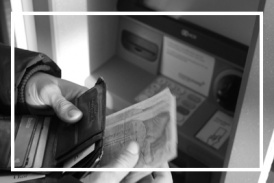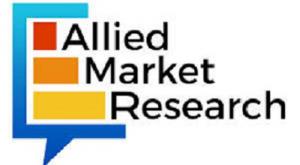EV Boom Powers Lithium-ion Battery Market to $189.4 Billion by 2032
The global market is growing rapidly, driven by demand for EVs, electronics, and renewables, though raw material and recycling issues remain key challenges.
The lithium-ion battery market has emerged as a cornerstone of modern energy storage solutions, powering everything from smartphones and laptops to electric vehicles (EVs) and renewable energy systems. These batteries are favored for their high energy density, lightweight construction, long cycle life, and fast charging capabilities. As global energy demands increase and consumers shift toward portable and efficient power sources, lithium-ion technology continues to evolve with improvements in safety, performance, and cost-efficiency.
A key driver of this market is the accelerating adoption of electric mobility and the global push for decarbonization. Governments around the world are incentivizing EV adoption and investing in energy storage infrastructure to support renewable energy integration. Additionally, industries such as consumer electronics, aerospace, and industrial automation are increasingly relying on lithium-ion batteries for consistent, high-performance energy delivery. With innovations in battery chemistries such as lithium iron phosphate (LFP) and solid-state variants, the market is poised for sustained growth and technological advancement over the coming years.
Download PDF Brochure: https://www.alliedmarketresearch.com/request-sample/A01071
Market Dynamics
The lithium-ion battery market is witnessing substantial growth, fueled by the global shift toward sustainable energy solutions and renewable energy integration. Governments and private institutions are increasingly investing in energy storage technologies to support clean power systems. This heightened demand for reliable, high-performance batteries has positioned lithium-ion technology as a key enabler in energy storage. With its high energy density, low maintenance, and long lifespan, lithium-ion batteries are playing a critical role in applications ranging from electric vehicles (EVs) to grid-scale storage systems.
One of the major growth drivers for the lithium-ion battery market is the increased focus on national security and defense modernization. Rising geopolitical tensions, border disputes, and the growing use of unmanned military equipment have fueled the demand for energy-dense power sources. Lithium-ion batteries are integral to the operation of smart weapons, unmanned aerial vehicles (UAVs), and autonomous military systems. Their lightweight structure and ability to deliver sustained energy output make them ideal for advanced military applications. For example, Airbus Defense and Space has successfully tested High Altitude Pseudo-Satellite Aircraft (HAPS), which rely on solar energy during the day and lithium-ion batteries at night—highlighting the technology’s growing military relevance.
In addition to defense, the expansion of electric mobility is a critical growth engine for the lithium-ion battery market. As governments enforce stricter emission regulations and implement policies to phase out fossil fuel vehicles, the demand for electric cars, buses, and two-wheelers is surging. Lithium-ion batteries, particularly those based on lithium iron phosphate (LFP) and nickel manganese cobalt (NMC) chemistries, are widely used in EVs due to their fast charging capability and long cycle life. These batteries are also making inroads into the aerospace and marine transport industries, expanding their footprint in electric mobility and contributing to carbon neutrality goals.
The transition to renewable energy sources, such as solar and wind, is another major factor accelerating lithium-ion battery adoption. Renewable energy systems require reliable and efficient energy storage to balance grid demand and supply fluctuations. Lithium-ion batteries are well-suited for such applications, offering scalable and flexible storage solutions for both residential and utility-scale projects. The increase in solar farm and wind energy installations worldwide is opening up new opportunities for battery manufacturers, particularly in regions with unstable power grids and high renewable penetration.
Snag Discount: https://www.alliedmarketresearch.com/checkout-final/A01071
Despite the market's robust growth trajectory, certain challenges remain. The relatively high production cost of lithium-ion batteries—estimated at around $190 per kWh in 2022—poses a barrier to widespread adoption. These costs are largely due to complex manufacturing processes and the need for advanced materials such as graphene composites to prevent dendrite formation and enhance safety. Addressing these challenges will require continued investment in R&D, automation, and material innovation. Nonetheless, the growing urgency to decarbonize the global economy and the rapid development of electric transport and energy storage technologies are expected to sustain strong growth in the lithium-ion battery market in the coming years.
Segment Overview
The lithium-ion battery market analysis is segmented into several key categories to better understand its structure and dynamics. Based on components, the market includes cathode, anode, electrolyte, separator, and others, each playing a crucial role in battery performance, longevity, and efficiency. In terms of capacity, the market is divided into four groups: 0–3,000 mAh, 3,000–10,000 mAh, 10,000–60,000 mAh, and 60,000 mAh and above, reflecting the wide range of energy storage needs—from small electronics to large-scale industrial and automotive applications.
When segmented by application, lithium-ion batteries serve industries such as electrical & electronics, automotive, industrial, and others, with the automotive segment witnessing significant growth due to the global surge in electric vehicle adoption. Regionally, the market is analyzed across North America, Europe, Asia-Pacific, and LAMEA (Latin America, Middle East, and Africa). Among these, Asia-Pacific leads the market due to strong manufacturing hubs, high EV demand, and government-backed renewable energy initiatives. Meanwhile, North America and Europe are investing heavily in battery innovation and localized production to reduce supply chain dependencies.
Regional Analysis
Asia-Pacific dominates the lithium-ion battery market, driven by strong manufacturing capabilities, robust demand from the electric vehicle (EV) and consumer electronics sectors, and significant government support for clean energy initiatives. Countries like China, South Korea, and Japan are home to leading battery manufacturers and form the core of the global lithium-ion battery supply chain. China, in particular, plays a central role due to its vast reserves of raw materials, government subsidies for EVs, and investments in battery giga-factories. The region’s focus on renewable integration and energy storage systems further strengthens its position in the global market.
North America and Europe are witnessing rapid growth in the lithium-ion battery market, fueled by the transition toward electric mobility and the push for domestic battery manufacturing. In North America, the U.S. is ramping up production through partnerships with automakers and energy storage providers, supported by federal policies like the Inflation Reduction Act. In Europe, countries like Germany, France, and the Nordic nations are investing in battery innovation and sustainable supply chains to reduce reliance on imports and meet net-zero targets. With strong regulatory frameworks and a growing focus on circular battery economies, both regions are emerging as competitive players in the global lithium-ion battery ecosystem.
For Purchase Inquiry: https://www.alliedmarketresearch.com/purchase-enquiry/A01071
Competitive Analysis
The lithium-ion battery market is highly competitive and characterized by the presence of several key global players who dominate both the supply chain and technological development. Leading companies such as BYD Co., Ltd., A123 Systems, LLC, Hitachi, Ltd., CATL, LG Chem, Panasonic Corp., Saft, Samsung SDI Co., Ltd., Toshiba Corp., and GS Yuasa corporation hold significant market shares due to their extensive manufacturing capacity, technological innovation, and strategic partnerships with automakers and electronics manufacturers. These companies are heavily investing in advanced chemistries such as lithium iron phosphate (LFP) and solid-state batteries to improve energy density, safety, and lifespan, while also working on expanding global production footprints to meet rising demand.
Emerging players and regional manufacturers are also gaining ground by focusing on niche markets, cost-effective production, and sustainable battery solutions. Startups and mid-tier companies are innovating in areas such as battery recycling, second-life battery applications, and energy storage systems for grid support. Moreover, increased investment in R&D and government support for local battery ecosystems, especially in Europe and North America, are encouraging new entrants to challenge incumbents. The competitive landscape is expected to remain dynamic, with players racing to secure raw material sources, optimize supply chains, and deliver next-generation battery technologies to meet the demands of electrification and renewable energy integration.
Key Findings of the Study:
• Asia-Pacific Leads the Market: The region dominates global production and consumption, driven by China’s massive EV demand and established battery manufacturing infrastructure.
• Automotive Segment Drives Growth: Electric vehicles are the primary application segment, supported by global decarbonization goals and government subsidies.
• High-Capacity Batteries Gain Momentum: The 10,000–60,000 mAh and above capacity segments are witnessing rapid growth due to increased usage in EVs and industrial energy storage systems.
• Cathode and Anode Are Critical Components: Advances in cathode materials (like NMC and LFP) and anode innovations are pivotal to enhancing battery performance and lifespan.
• Sustainability and Recycling Are Rising Priorities: Battery recyclability and second-life applications are becoming essential focus areas amid concerns over raw material availability and environmental impact.
Trending Report in Energy & Power Industry:
Solid State Battery Market
https://www.alliedmarketresearch.com/solid-state-batteries-market
Battery Recycling Market
https://www.alliedmarketresearch.com/battery-recycling-market
Energy Storage System Market
https://www.alliedmarketresearch.com/energy-storage-system-market-A280994
Lithium-Iron Phosphate Batteries Market
https://www.alliedmarketresearch.com/lithium-iron-phosphate-batteries-market-A13057
Hybrid EV Battery Market
https://www.alliedmarketresearch.com/hybrid-ev-battery-market-A14869
EV Battery Reuse Market
https://www.alliedmarketresearch.com/ev-battery-reuse-market-A31427
Electric Scooter Battery Market
https://www.alliedmarketresearch.com/electric-scooter-batteries-market-A11636
Lithium-Ion Battery Recycling Market
https://www.alliedmarketresearch.com/lithium-ion-battery-recycling-market-A11683
David Correa
Allied Market Research
+15038946022 ext.
email us here
Visit us on social media:
LinkedIn
Facebook
YouTube
X
Legal Disclaimer:
EIN Presswire provides this news content "as is" without warranty of any kind. We do not accept any responsibility or liability for the accuracy, content, images, videos, licenses, completeness, legality, or reliability of the information contained in this article. If you have any complaints or copyright issues related to this article, kindly contact the author above.
DRAM Market Expected to Hit $10.2 Billion by 2032, Registers Steady 5.4% CAGR From 2022 to 2032
Zinc Ion Batteries Market Expected to Hit $467.1 Million by 2032, Heats Up with 4.2% CAGR
Evaluating Gutter Guards for South Louisiana Homes: Investment Insights and Seasonal Benefits
Więcej ważnych informacji
 Jedynka Newserii
Jedynka Newserii

 Jedynka Newserii
Jedynka Newserii

Bankowość

Rośnie liczba i wartość udzielonych konsumentom kredytów gotówkowych. Gorzej mają się kredyty ratalne oraz te udzielane firmom
Rynek kredytowy w Polsce co do zasady rośnie, choć nierównomiernie. Z danych Biura Informacji Kredytowej wynika, że najlepiej rozwija się segment kredytów gotówkowych dla konsumentów. Wartościowo wzrosła też kwota udzielonych limitów w kartach kredytowych. Według prognoz BIK w całym roku wzrośnie wartość zarówno udzielonych kredytów mieszkaniowych, jak i gotówkowych, choć tych pierwszych poniżej inflacji. Wcześniejsze cięcia stóp procentowych przez RPP nie zmieniły tej prognozy.
Transport
37,5 proc. środków z Planu Społeczno-Klimatycznego trafi na walkę z ubóstwem transportowym. Organizacje branżowe apelują o zmianę priorytetowych projektów [DEPESZA]

Ministerstwo Funduszy i Polityki Regionalnej z końcem czerwca zakończyło konsultacje Planu Społeczno-Klimatycznego, który otwiera drogę do pozyskania 65 mld zł (11,4 mld euro) z unijnego Społecznego Funduszu Klimatycznego. Polska będzie jego największym beneficjentem, a 37,5 proc. budżetu zostanie przeznaczone na bezpośrednie wsparcie osób narażonych na ubóstwo transportowe. Organizacje branżowe oceniają jednak, że walka z tym zjawiskiem może się okazać nieskuteczna. W toku konsultacji zgłosiły swoje zastrzeżenia co do priorytetów w wydatkach i sposobu wsparcia inwestycji w transport rowerowy.
Prawo
Firmy będą mogły przetestować krótszy tydzień pracy z rządowym wsparciem. Nabór wniosków ruszy w sierpniu

Ministerstwo Rodziny, Pracy i Polityki Społecznej uruchamia pilotaż krótszego tygodnia pracy. Zainteresowane wzięciem w nim udziału firmy będą się mogły ubiegać o wsparcie finansowe ze strony rządu. Politycy Nowej Lewicy, którzy są pomysłodawcami testu tego rozwiązania, przekonują, że finalnie zyskają na nim wszyscy, zarówno pracownicy, jak i pracodawcy, a ostrzeżenia o spodziewanych problemach gospodarki są mocno przesadzone.
Partner serwisu
Szkolenia

Akademia Newserii
Akademia Newserii to projekt, w ramach którego najlepsi polscy dziennikarze biznesowi, giełdowi oraz lifestylowi, a także szkoleniowcy z wieloletnim doświadczeniem dzielą się swoją wiedzą nt. pracy z mediami.

![37,5 proc. środków z Planu Społeczno-Klimatycznego trafi na walkę z ubóstwem transportowym. Organizacje branżowe apelują o zmianę priorytetowych projektów [DEPESZA]](https://www.newseria.pl/files/1097841585/rower3,w_85,_small.jpg)







.gif)

 |
| |
| |
|